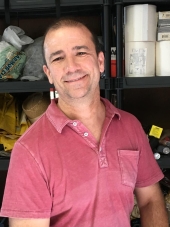From
restoring-iberian-rain
"In the 1990s the European Commission approached Millan Millan to look into why Spain was losing its rain.
Millan was the head of the Center of Environmental Studies of the Mediterranean, an organization with 90 scientists and staff. He was a meteorologist who took pride in his observational skills, and his ability to read the clouds to discern an atmosphere’s history and future.
In his detective work to solve the Riddle of the disappearing Spain rain, he walked around the local geographical areas, in the mountains with their maqui (shrubbery), and the marshes of the local area, to get a sense of what was causing the loss of the summer storms. He talked to a lot of locals who too had noticed the loss of the rain over the decades.
Millan put together a program to gather meteorological data from towers, tethered balloons, and aircraft.
Then he ran various computer simulation models. Using this three pronged approach of observation, measurement, and simulation, Millan figured out the mystery that was causing the rains to disappear.
The culprit was the draining of the marshes and the chopping down of the vegetation and the forests.
This nature loss had led to reduced evapotranspiration and increased air temperature, which made it harder for clouds to form.
Having figured out the problem, Millan worked over the years to try convince the government to regenerate the land, so that the rain may return.
I connected with Millan and recorded this interview with him. Rob Lewis, author of the newsletter The Climate According to Life, also had a chance to correspond with Millan.
He writes Millan “had to watch those summer storms he used to track as a boy with his father gradually disappear altogether.” Millan said to him “Those summer storms…are now totally gone.. The landscapes I loved, as they were, I now recognize as very downgraded ones. I can not stop thinking on how they must have been. My eyes can’t stop searching for the clues, all around, of Toba Rocks in the slopes. Rock created when limestone-enriched water flowed over mosses and other herbs in waterfalls and water oozing off the slopes. Now just rocky slopes. It is all over the place here and there, where water flowed just a few years ago.”
Millan passed away earlier this year.
Now in Iberia, I wanted to restore the rain, to honor Millan’s legacy.
Restoring the rain will entail restoring marshes, shrubbery, forests, rivers, and aquifers, utilizing the local dehesas (the agroforestry lands), shifting to regenerative agriculture practices, rewilding, and using a variety of water earthworks practices.
I met up with water cycle restorationist Nick Steiner (who I had recently recorded a podcast with) and some other amazing folk in Spain. "









